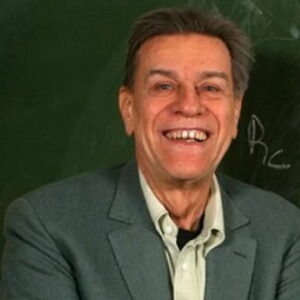Pierre Gilles de Gennes was a French scientist who was known for his research on how liquid crystals and polymers behave when they are ordered. In 1991, he won the Nobel Prize in Physics for the above work. The Nobel committee called him the “Isaac Newton of our time.” Born in Paris, France, to a nurse and a doctor, he first went to school at home and then went to the Ecole Normale Superieure. In the end, he worked as an engineer at the Atomic Research Centre and got his PhD from the institute. He did his post-doctoral research in the United States, and after working for the French Navy for just over two years, he became a professor at the University of Paris-Sud, Orsay campus. After that, he taught and did research at the College de France before becoming the head of the Ecole Superieure de Physique et de Chimie Industrielles. He stayed in his second job for 22 years. People think that what he learned about liquid crystals and polymers is one of the most important things ever learned in physics.
Early years and childhood
On October 24, 1932, in Paris, France, Pierre Gilles de Gennes was born to Robert Joachim Pierre de Gennes and Martha Marie Yvonne Morin-Pons. His mother worked as a nurse, and his father was a doctor.
He didn’t go to a regular school. Instead, he was taught at home, and this went on until he was 12 years old. After that, he went to the Ecole Normale Superieure, where he graduated in 1955. German was a very important subject for him at the Ecole Normale Superieure.
In 1955, he started working as a research engineer at the Atomic Research Centre in Saclay, which is in the southern part of Paris. The institute gave him his doctorate two years after that. He did most of his work at the Atomic Research Centre in the fields of magnetism and neutron scattering.
Pierre Gennes’s Career
In 1959, he went to the United States to study at the University of California, Berkeley, as a visiting post-doctoral scholar. During his time at Berkeley, he worked with Charles Kittel, who was a well-known scientist at the time. After that, he went to work for the French Navy, where he stayed for 2 years and 3 months.
After his time in the French Navy was over, he was hired as a professor at the Orsay campus of the University of Paris-Sud in 1961. Soon after, he started the “Orsay group of semiconductors.” He worked on that project for seven years before he changed careers and started working with liquid crystals.
In 1971, he became a professor at College de France. While he was there, he joined STRASACOL, a group of scientists from College de France, Strasbourg, and Saclay who worked together to study polymer physics. He worked at the College de France for five years as a professor.
In 1976, he was named director of the Ecole Superieure de Physique et de Chimie Industrielles, a job he held for 26 years. Four years after he joined the institute, he started his research on the dynamics of wetting and sticking to surfaces. He won the Nobel Prize in Physics for his work on finding a way to study the order of things in liquid crystals and polymers.
His Works of note
In a career that included a number of ground-breaking studies at different institutions, his most important work were without a doubt his work on the order phenomena of different kinds of matter.
He used math to come up with general theories about the matter. In 1990, he won the Nobel Prize in Physics for the same work. The committee even called him the “Isaac Newton of our time.”
Awards & Achievements
In 1984, the Royal Society of London made him a Fellow.
In 1987, the Matteucci Medal was given to him.
He won the Harvey Prize in 1988.
In 1990, he won both the Wolf Prize and the Lorentz Medal.
In 1991, he was given the Nobel Prize in Physics.
He won the Eringen Medal in 1998.
Personal History and Legacies
In 1954, he married Anne Marie Elisabeth Eugenie Rouet, and they stayed together until he died. There were three of them.
He died in Orsay, France, on May 18, 2007, at the age of 74. No one knows what caused his death.
Estimated Net worth
Pierre-Gilles de Gennes It is worth $1.6 million.


